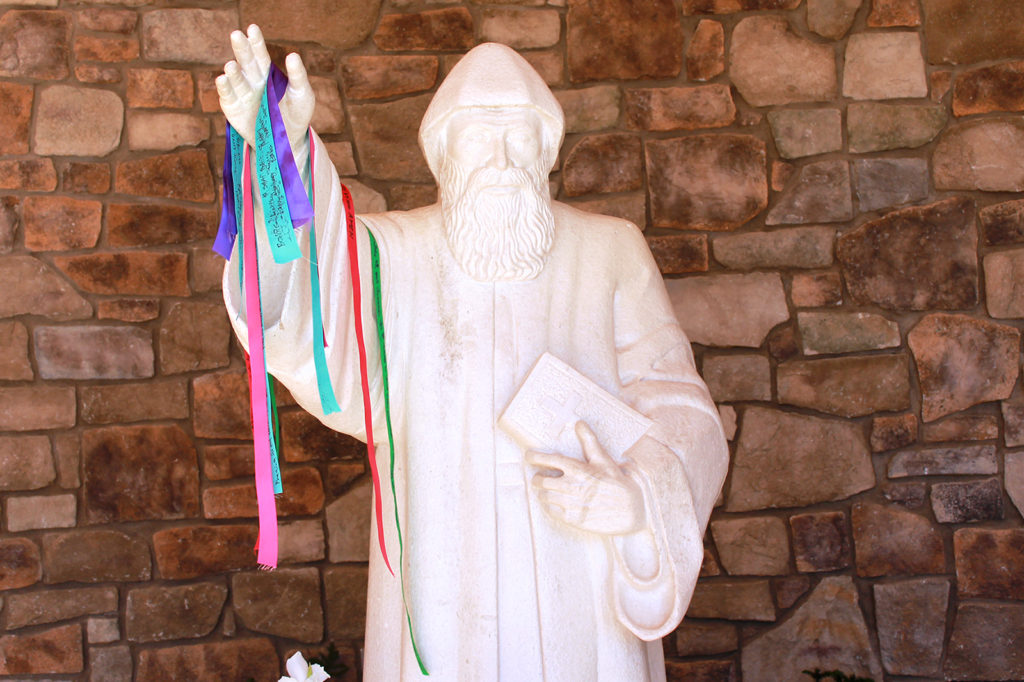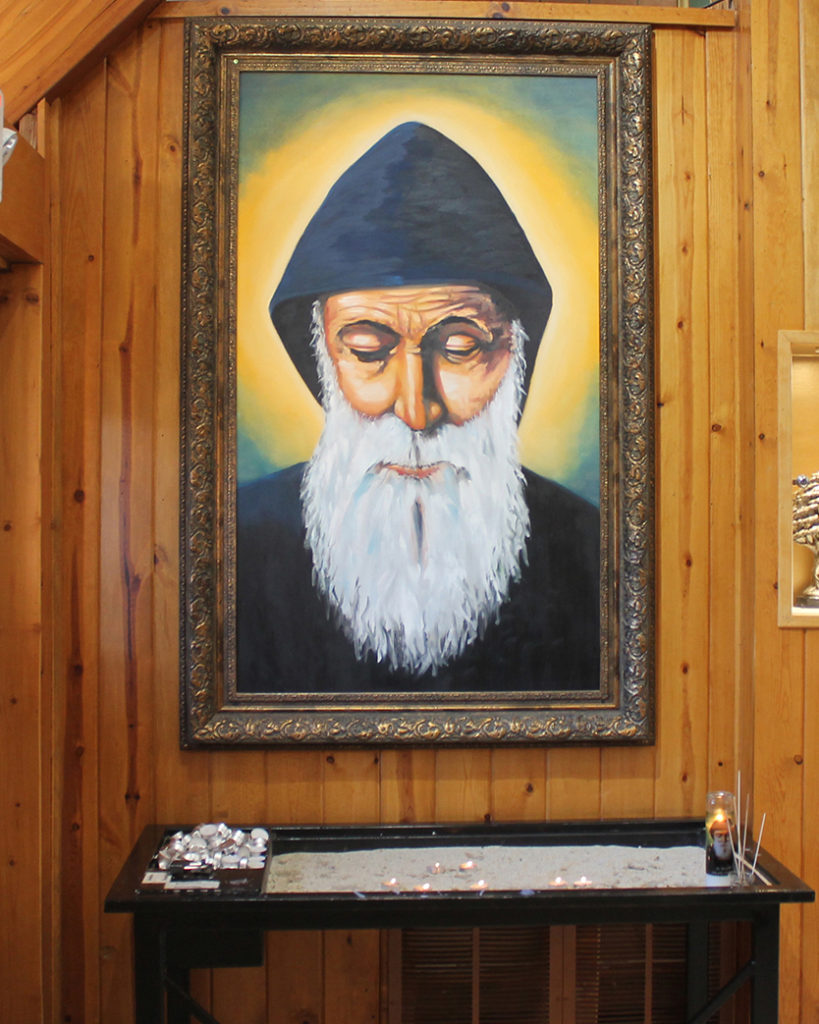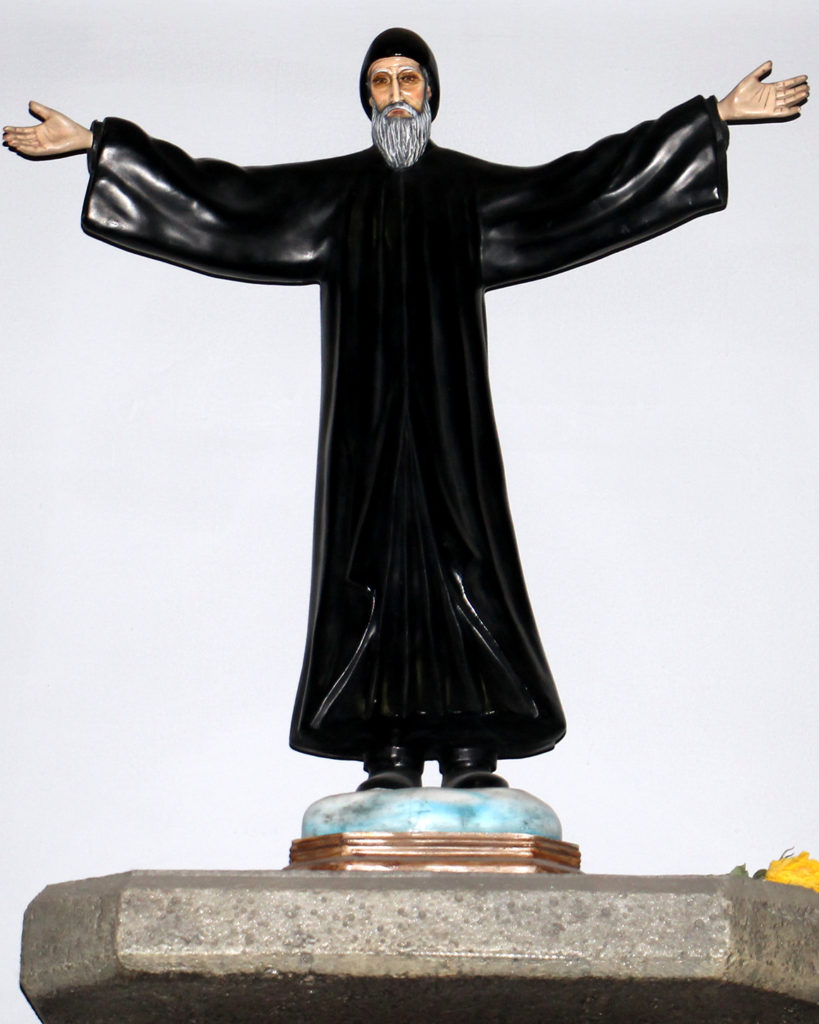

July 24
(CNA) — Born into humble circumstances in Bkaakafra, Lebanon on May 8, 1828, Yussef Antoun Makhlouf was the youngest of Antoun Zaarour Makhlouf and Brigitta Elias al-Shediyaq’s five children. Antoun, who had been taken away from the family and forced into hard labor, died when his youngest son was only three.
Yussef studied at the parish school and tended to his family’s cow. Engaged in prayer and solitude from an early age, he spent a great deal of time outdoors in the fields and pastures near his village, contemplating God amid the inspiring views of Lebanon’s valleys and mountains.
He frequently withdrew to a grotto dedicated to the Blessed Virgin Mary to pray and meditate. Villagers in Bkaakafra called him the “saint” for his piety, unwavering faith in Jesus Christ and exemplary devotion to the Blessed Virgin Mary. In many respects, the grotto became his first hermitage and altar of worship.
His uncle and guardian Tanious wanted the boy to continue working with him, while his mother wanted him to marry a young woman. Yussef had other plans, however, and left home in 1851 without informing anyone.

Yussef would become “Brother Sharbel,” after making a pilgrimage on foot to his new monastic home. In this, he followed the example of his maternal uncles, who were already living as solitary monks at the Hermitage of St. Paul in the Qadisha Valley.
Sharbel took his monastic vows on Nov. 1, 1853, during a solemn ceremony which was closed to the public and off-limits even to his family. He subsequently studied for the priesthood and was ordained, returning to the Monastery of St. Maron in Annaya.
The priest-monk lived and served in the monastery for 19 years, showing great devotion to the life of prayer, manual work and contemplative silence.
Sharbel’s superiors observed God’s “supernatural power” at work in his life, and he became known as a wonder-worker even among some Muslims. In 1875, he was granted permission to live as a solitary monk in a nearby hermitage dedicated to Sts. Peter and Paul.
Rigorous asceticism and a profound union with God continued to characterize the monk’s life for the next 23 years. Deeply devoted to God’s Eucharistic presence, he suffered a stroke while celebrating the Divine Liturgy of the Maronite Catholic Church on Dec. 16, 1898. He died on Christmas Eve of that year. Upon the approval of Church authorities, Sharbel’s body was exhumed and found to be incorrupt, and further examination showed that his body transpired blood and water like any living organism.
St. Sharbel’s tomb has been a site for pilgrimages since his death. Hundreds of miracles are believed to have occurred through his intercession with God, both in Lebanon and around the world.
On the occasion of his beatification on Dec. 5, 1965 — at the close of the Second Vatican Council — the Eastern Catholic hermit was described by St. Paul VI as “ a new, eminent member of monastic sanctity,” who “through his example and his intercession is enriching the entire Christian people.”

He was canonized in 1977 by the same pontiff, who had earlier hailed the Lebanese Maronite saint as an “admirable flower of sanctity blooming on the stem of the ancient monastic traditions of the East.” He is the first Maronite saint included in the Latin-rite calendar.
In his homily for St. Sharbel’s canonization Mass, the pope said the Church needs “people who offer themselves as victims for the salvation of the world, in a freely accepted penance, in an incessant prayer of intercession, like Moses on the mountain, in a passionate search for the Absolute, testifying that God is worth worshiping and loving for himself.”
The lifestyle of these religious, monks, and hermits is not proposed to all as an imitable charism, he said, but the faithful can learn from them because “in a radical way, they incarnate a spirit of which no faithful of Christ is dispensed, they exercise a function of which the Church cannot do without, they recall a salutary way for all.
He is patron of the St. Sharbel Shrine at St. Joseph Maronite Catholic Parish in Phoenix. He maintains a significant devotion among Hispanic Catholics, to the point that St. Joseph offers liturgies in Spanish.
Local Catholic Dafne Gutiérrez credits the miraculous healing of her eyesight to St. Sharbel’s intercession after she venerated his relics when they came to Phoenix in 2016.
“Although miraculous instantaneous cures are rare, they are not unknown, and we should always be open to this possibility,” wrote Bishop Elias A. Zaidan of the Los Angeles-based Maronite Catholic Eparchy of Our Lady of Lebanon — the jurisdiction where St. Joseph is located — regarding the healing. “As human beings, we are always amazed by the physical healing granted to people who have been under pain and suffering caused by certain diseases.”
A physical healing may completely cure someone — or may not — but it may also bring about a healing of the condition of the soul,” he adds. “We are able to judge spiritual healing by the fruit of that healing — by what we observe as a result.





